http://repositorio.uotavalo.edu.ec/handle/52000/67| Campo DC | Valor | Lengua/Idioma |
|---|---|---|
| dc.contributor.author | Dueñas Tituaña, Jorge Martín | - |
| dc.date.accessioned | 2016-08-04T14:24:27Z | - |
| dc.date.available | 2016-08-04T14:24:27Z | - |
| dc.date.issued | 2014 | - |
| dc.identifier.citation | Dueñas Tituaña, Jorge Martín (2014). Uso del graffiti como herramienta para la comunicación publicitaria en la ciudad de Otavalo. Otavalo. UO. Diseño Gráfico. 133p. | es_ES |
| dc.identifier.uri | http://repositorio.uotavalo.edu.ec/handle/52000/67 | - |
| dc.description | The project entitled "Using Graffiti as a tool for marketing communication in the city of Otavalo," is a comprehensive and thorough research on Graffiti, their problems and their possible uses advertising, that can be applied in the city of Otavalo. In the first chapter entitled "Theoretical Framework", a deep and detailed research process was performed on the elements and issues concerning the Graffiti over time until the present time, covering topics such as advertising and graphic design, which was subtracted the information necessary and relevant, to give it a conceptual underpinning the design of the proposal and the product. In the second chapter entitled "Diagnosis", the objectives are detailed for the solution of scientific problems raised. To find out what the best options to solve the problem, we proceeded to employ techniques and research methods, in order to get as much information as possible and determine if the final product is related to the subject of study and analyze feasibility and feasibility studies for the solution of the problem The third chapter deals with the "Proposal" itself, which specifies in detail the parameters and technical aspects, which has made the graphic proposal also summarizes its content, colors and format as well as the determination of the concept, based on the results of the previous chapters. | es_ES |
| dc.description.abstract | El proyecto titulado “Uso del Graffiti como herramienta para la comunicación publicitaria en la ciudad de Otavalo”, es una investigación integral y minuciosa sobre el Graffiti, sus problemáticas y sus posibles usos publicitarios, que se pueden aplicar en la ciudad de Otavalo. En el primer capítulo denominado “Marco Teórico”, se realizó un proceso investigativo profundo y detallado, acerca de los elementos y temas concernientes al Graffiti a través del tiempo hasta los momentos actuales, abarcando temas como la publicidad y el diseño gráfico, donde se sustrajo la información necesaria y pertinente, para darle un sustento conceptual al diseño de la propuesta y al producto. En el segundo capítulo titulado “Diagnóstico”, se detallan los objetivos para encontrar la solución del problema científico planteado. Para saber cuáles serían las mejores opciones para solucionar la problemática, se procedió a emplear técnicas y métodos de investigación, con el fin de poder obtener la mayor información posible, y determinar si el producto final tiene relación con el objeto de estudio, así como analizar su viabilidad y factibilidad para la solución del problema planteado El tercer capítulo trata de la “Propuesta” en sí, donde se especifican detalladamente los parámetros y aspectos técnicos, con los que se ha realizado la propuesta gráfica, además se resume su contenido, sus colores y formato, así como la determinación del concepto, basado en los resultados obtenidos de los capítulos anteriores. | es_ES |
| dc.format.extent | 133p. | es_ES |
| dc.language.iso | spa | es_ES |
| dc.publisher | Otavalo / Universidad de Otavalo / 2013 | es_ES |
| dc.rights | openAccess | es_ES |
| dc.rights.uri | http://creativecommons.org/licenses/by-nc-sa/3.0/ec/ | es_ES |
| dc.subject | Gráfico | es_ES |
| dc.subject | Publicidad | es_ES |
| dc.subject | Comunicación | es_ES |
| dc.subject | Investigación | es_ES |
| dc.title | Uso del graffiti como herramienta para la comunicación publicitaria en la ciudad de Otavalo. | es_ES |
| dc.type | bachelorThesis | es_ES |
| Aparece en las colecciones: | Tesis - Diseño Gráfico | |
| Fichero | Descripción | Tamaño | Formato | |
|---|---|---|---|---|
| UO-PG-DIS-2014-01.pdf | TESIS A TEXTO COMPLETO | 9.63 MB | Adobe PDF |  Visualizar/Abrir |
Este ítem está protegido por copyright original |
Este ítem está sujeto a una licencia Creative Commons Licencia Creative Commons


